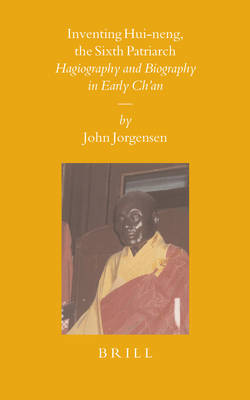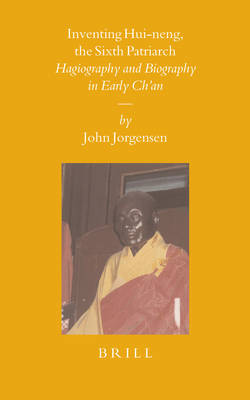
- Afhalen na 1 uur in een winkel met voorraad
- Gratis thuislevering in België vanaf € 30
- Ruim aanbod met 7 miljoen producten
- Afhalen na 1 uur in een winkel met voorraad
- Gratis thuislevering in België vanaf € 30
- Ruim aanbod met 7 miljoen producten
Zoeken
€ 505,45
+ 1010 punten
Omschrijving
It was through the propaganda of Shen-hui (684-758) that Hui-neng (d. 710) became the also today still towering figure of sixth patriarch of Ch'an/Zen Buddhism, and accepted as the ancestor or founder of all subsequent Ch'an lineages.
The first part of the book analyses the creation of the image of Hui-neng and the worship of a lacquered mummy said to be that of Hui-neng. Using the life of Confucius as a template for its structure, Shen-hui invented a hagiography for the then highly obscure Hui-neng. At the same time, Shen-hui forged a lineage of patriarchs of Ch'an back to the Buddha using ideas from Indian Buddhism and Chinese ancestor worship. The second half of the book examines the production of the hagiographies of Hui-neng, how they evolved, and the importance of ideas about authorship and the role of place. It demonstrates the influence of Confucian thought, politics and the periphery in the growth of early Ch'an hagiography and the changing image of Hui-neng.
The first part of the book analyses the creation of the image of Hui-neng and the worship of a lacquered mummy said to be that of Hui-neng. Using the life of Confucius as a template for its structure, Shen-hui invented a hagiography for the then highly obscure Hui-neng. At the same time, Shen-hui forged a lineage of patriarchs of Ch'an back to the Buddha using ideas from Indian Buddhism and Chinese ancestor worship. The second half of the book examines the production of the hagiographies of Hui-neng, how they evolved, and the importance of ideas about authorship and the role of place. It demonstrates the influence of Confucian thought, politics and the periphery in the growth of early Ch'an hagiography and the changing image of Hui-neng.
Specificaties
Betrokkenen
- Auteur(s):
- Uitgeverij:
Inhoud
- Aantal bladzijden:
- 888
- Taal:
- Engels
- Reeks:
- Reeksnummer:
- nr. 68
Eigenschappen
- Productcode (EAN):
- 9789004145085
- Verschijningsdatum:
- 23/09/2005
- Uitvoering:
- Hardcover
- Formaat:
- Genaaid
- Afmetingen:
- 173 mm x 244 mm
- Gewicht:
- 1678 g

Alleen bij Standaard Boekhandel
+ 1010 punten op je klantenkaart van Standaard Boekhandel
Beoordelingen
We publiceren alleen reviews die voldoen aan de voorwaarden voor reviews. Bekijk onze voorwaarden voor reviews.








